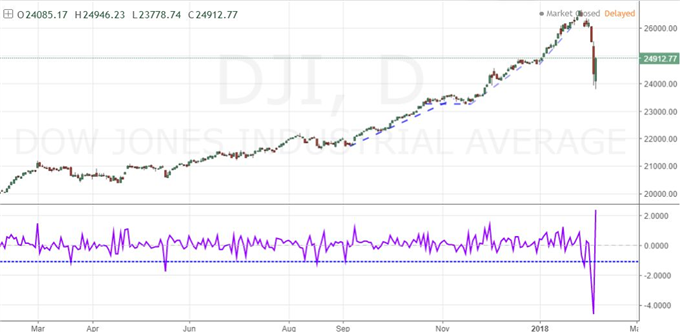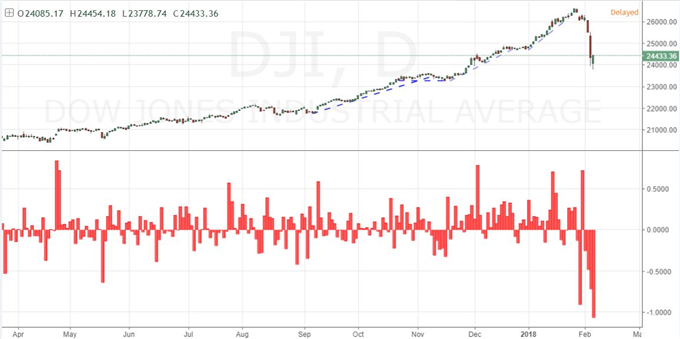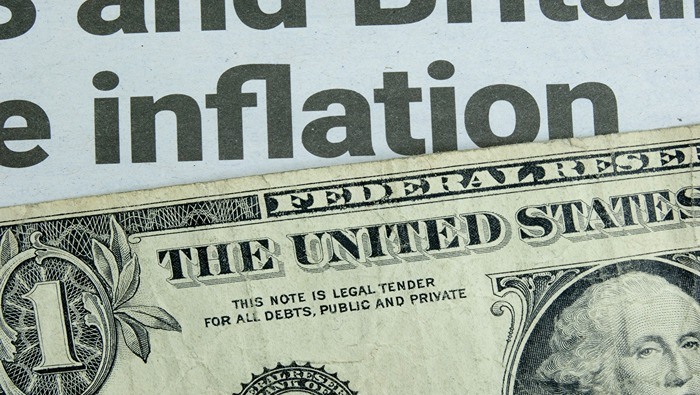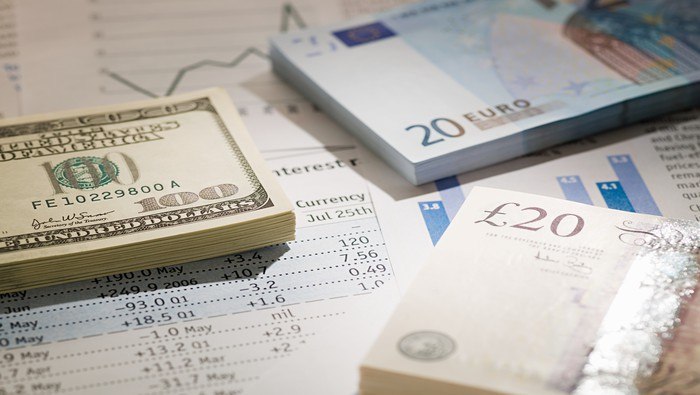Talking Points:
•The Dow put in for its best daily gain in two years while the S&P 500's 1.7 percent close higher was its best since the US election
•Yet, the gaps lower (biggest since 2001 and 2009 respectively) and previous losses reflect on the lack of conviction we can count on
•Volatility begets volatility and should not be intepreted as commitment, meaning traders should not try to pick key bottoms or tops
See how retail traders are positioning in the FX majors, indices, gold and oil intraday using the DailyFX speculative positioning data on the sentiment page.
Risk Strength with a Caveat
If you only looked at closing prices for you market updates, this past session seemed remarkably robust. Following a week of painful declines, the risk-sensitive benchmark assets posted their best day in months or years. The Dow 30's more than 2 percent advance from Tuesday was the biggest in two years, while the S&P 500's 1.7 percent day was its best showing since the US election. In a vacuum, that may look impressive, but it is easy to put this performance in context. The bearish gap on the open that preceded these notable recoveries was the worst since 2001 and 2009 for the Dow and S&P 500 respectively. And, the rout they both suffered the day before was the worst single-day for each since 2011 while the cummulative week through Monday compares to the potent risk aversion bout triggered by China's currency repricing back in August 2015. Should we be so enthusiastic of a hefty bounce in the midst of an abysmal tumble?

Picking Tops and Bottom Versus Strategy Around Volatility
Volatility is catnip for traders. It is seen as the manna that will bring quick and large profits. Yet, volatility claims far more casualties in the speculative rank than any central banker or regulatory institution that market participants tend to blame. Ramping up the intensity of the market requires strategy and execution to be far more precise. A fast moving market in the opposite direction you may have assumed simply means quicker and often times steeper losses. The bounce we have seen this past session should confer very little conviction those looking for opportunity. There are two general scenarios this painful sentiment tumble would have taken: either it continues to burn until it eventually snuffs itself out or it takes a breather. A breather could turn into a true rebound with an intention to return to record highs for US indices, but it could also simply be a short break before the selling picks back up. And, such a break after such dramatic losses would readily support a bounce that matches the intensity of what precedes it. Yet, importantly, it doesn't necessarily support a return to trend.

Big Picture and Higher Probabilities
Picking abrupt turns in highly volatile markets is a very low probability endeavor with fantastically high levels of risk to your account. So, how should we approach the opportunity in large scale changes in tack? First, it is important to appreciate the scale of what we can take advantage. If we have just seen a flash in the pan and we will revert to the record highs and by-product of extreme complacency, we can build confidence when further milestones are reached such as 2750, 2850 or record highs for the S&P 500 or a close back below 20 or rebalance in the curve for the VIX volatility index. Even if you are of the most conservative type, you can return to the buy and hold when we return to extremes. Alternatively, if we are indeed seeing the death throes of a nine-year exuberance, there are thousands of points that we can reap by shorting risk and favoring safe havens when signals like correlation across asset classes give us greater certainty. Scales like that do not need perfect timing but rather deeper conviction.

Dollar and Event Risk
As the vast majority of traders watch the general risk and volatility themes unblinkingly, we should make sure to include a broader assessment of our environment. The Dollar will be a remarkable opportunity and a key indicator in its own right. The Greenback didn't mount a full-blown recover from two weeks of consolidation but it also simply didn't slide alongside the equities rebound. This currency is an absolute haven, but it is also the highest yielding major and at a considerable discount thanks to 2017's slide. The sensitivity to risk is higher for the likes of AUD/USD and NZD/USD, but the true litmus test will be with EUR/USD and USD/JPY. Meanwhile, other themes can offer indepenent influence, but will not fully escape the gravity of such an extreme sentiment heave. Brexit for the Sterling is amplified especially given the height of the currency against the recent souring of negotiations. The RBNZ rate decision ahead is unlikely to deliver a clear hike interest against such an uncertain backdrop. And, both gold and cryptocurrencies offer a clear interpretation of what is and is not a haven. We try to evaluate a lucid course through extreme volatility in today's Trading Video.

To receive John’s analysis directly via email, please SIGN UP HERE







